
Joanna Penglase
Care Leaver Memorial Ceremony
Thank you, it’s wonderful that we are all here together today for this event and I am honoured to be part of it. We are here to remember the Forgotten Australians. Not all of us identify with that term but it is useful because it does cover all of us: we who grew up in Children’s Homes, orphanages and other institutions and in foster care in NSW in the years from the 1930s, to the 1970s. We have many ways of describing ourselves: care leavers, care survivors, Home children, state wards, inmates, ex-residents and other terms. The history of each of us is unique but we all share one common experience, we all have something in common: we grew up without our parents, in the care of strangers. I’d like to ask those of you who are here today as visitors, well wishers and supporters, who didn’t share our childhood experience, to spend a little time later on today, thinking about what your life would have been like if you had grown up without your parents. Can you imagine what it would have been like to be without them? If you can, you’ll begin to have some understanding of what it was like for us.
We lost our parents, and not only our parents, we lost our brothers and our sisters, our grandparents, aunts, uncles, all our kin. And so we lost ourselves, we lost our identity. Family stories, family holidays, Xmases and birthdays, family characters and family friends: they all add  up to you as a child in your family, this is your history, you take it in unconsciously and it shapes who you are and who you become.
up to you as a child in your family, this is your history, you take it in unconsciously and it shapes who you are and who you become.
We did not have that. So - what happened? The era of our childhood, not really so long ago, the recent past, was a very different time. No single parents’ pension, few preschools, no before or after school care, no holiday care, no respite care, none of the community or government supports for families that we take for granted today. Indeed the word ‘care’ was not used then.
The words that were used were ‘welfare’ and ‘charity’. When families broke down or broke up, in any family crisis, whether major or minor, there were very few options for parents and the children. This was a time – the years up to the 1970s or so - when it was assumed that all families had two parents, a breadwinner and a homemaker and if they didn’t it was an aberration and somehow their own fault. Of course that was never the full reality. But social policy operated as if it was. So when one parent died, deserted, was ill, including mentally ill, or was unemployed or when families were just too poor to carry on, the usual option, almost the only one, was to put the children in a Home. It had little to do with whether our parents loved us or wanted us and everything to do with whether they could manage to keep us. It’s also a sad fact that in the post-war era many children ended up in Homes who were the children of war veterans: in one large survey of care leavers, 44% who responded were the children of men who had come back from the Second War, and with no help to deal with their terrible experiences, had been unable to sustain family life.
There were once hundreds of children’s Homes in NSW, nearly 300 for example in 1956. They were run mainly by the churches and charities whose representatives are here with us today. In these Homes, brothers and sisters were separated along age and genders lines – Boys Homes, Girls’ Homes, Babies Homes – visiting was minimal, as was contact with the outside community, and Homes were run along strict institutional lines, almost like prisons. So within the Home, families were fragmented once again, and children, as we now know, were emotionally neglected and deprived, and frequently and commonly physically and sexually abused. What did we feel in our Homes that weren’t home? We felt abandoned and forgotten, we felt fear and shame, we often felt hopeless. Said one care survivor ‘I thought I must have done something terrible, but I didn’t know what it was’. Many children and young people worked for no pay in laundries and on farms to earn money for the institution, a great many missed out on education, and most left their ‘care’ with no preparation for life in the world outside the Home.
What did we feel in our Homes that weren’t home? We felt abandoned and forgotten, we felt fear and shame, we often felt hopeless. Said one care survivor ‘I thought I must have done something terrible, but I didn’t know what it was’. Many children and young people worked for no pay in laundries and on farms to earn money for the institution, a great many missed out on education, and most left their ‘care’ with no preparation for life in the world outside the Home.
In NSW in the 20th century there were around 200,000 children in what we now call ‘out of home care’, half of them in these non-govt institutions, the other half in state care, usually with the state as their guardian. ‘The Welfare’ as it was always called, was the other scenario: when the NSW Dept of Child Welfare, now DOCS, got involved. Then, children were removed from their families, often by the police. After that, you were taken to a receiving depot – all of us here who were state wards of NSW will remember Bidura or Royleston; then a court appearance, where you, the child, were charged with being neglected - in what felt like the first of your crimes. Then, you were made a state ward, and either fostered or sent to one of the Department’s 30 or so institutions. As a foster child you stood to lose almost all knowledge of your birth family, and of your brothers and sisters, simply through separation and a lack of concern that you stay connected. And you could be back and forth between those institutions and multiple foster placements, always made to feel it was you who had failed. If you were lucky you landed in a good placement but it depended on luck and on the goodwill of the strangers you were assigned to. And one thing we must take away today is the determination that children’s wellbeing should never depend on luck and the goodwill of strangers. The other way you came to the notice of the Dept was as an ‘uncontrollable ‘child and you know I say that word in inverted commas. If this happened, you could end up in one of the training schools like Parramatta Girls or Mt Penang, and as a last resort when your training needed to be intensified, Tamworth for Boys and Hay for Girls, both of them housed in former colonial gaols. What happened to children and young people in these places is one of the blackest chapters of our welfare history.
It’s important to acknowledge, and I do, that there were many good people working both in the non-govt sector and for the Department; but they were working within a system and set of policies which took little or no account of children’s families, feelings or human needs. And so children suffered, and carried that heavy load of trauma and loss with them into their adult lives.
We come together today to celebrate our survival, to honour those of us who are gone before their time, often by their own hand, and to share with others in remembering and acknowledging these events and these feelings.
Acknowledgment and apology are a significant step in our journey towards healing, and this day we hope means that we are on our way to no longer being Forgotten Australians.
Thank you.
Thank you.
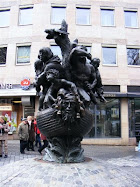
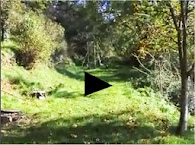
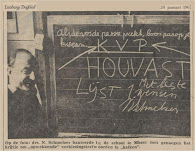

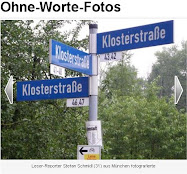
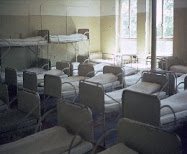






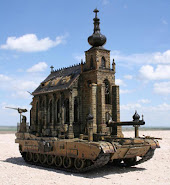
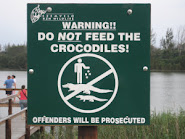

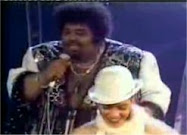
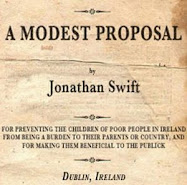


Geen opmerkingen:
Een reactie posten